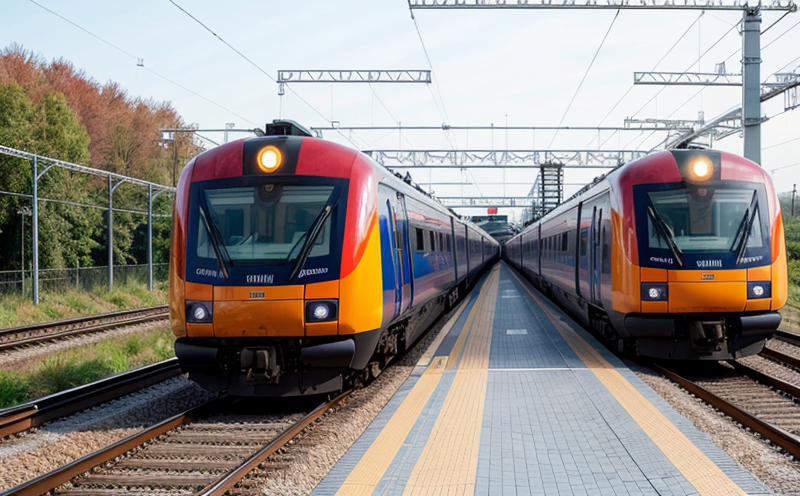EN 50592 Energy Efficiency Testing of Smart Railway Systems
The European standard EN 50592 is pivotal in ensuring that smart railway systems operate efficiently and sustainably. This testing protocol evaluates the energy efficiency of traction equipment, including electric locomotives and on-board electrical systems. Compliance with EN 50592 ensures that railway operations are optimized for minimal energy consumption without compromising performance or safety.
Smart railway systems rely heavily on advanced technologies such as IoT (Internet of Things), AI (Artificial Intelligence), and big data analytics to optimize energy usage, reduce downtime, and enhance overall operational efficiency. EN 50592 plays a crucial role in validating that these systems meet the stringent requirements for energy efficiency. This standard is particularly important given the global focus on reducing carbon footprints and improving sustainability within transportation sectors.
The testing protocol involves several key aspects:
- Energy consumption measurement under various operational conditions
- Analysis of system performance during peak usage periods
- Evaluation of energy-saving features in traction equipment
- Verification of compliance with environmental regulations
The standard is designed to ensure that railway systems are not only efficient but also environmentally friendly. This focus on sustainability is becoming increasingly important as the transportation industry aims to reduce its impact on the environment while maintaining high levels of service.
Testing according to EN 50592 involves rigorous procedures that simulate real-world operating conditions. This includes:
- Field testing in controlled environments
- Simulation of different weather and terrain conditions
- Evaluation of system performance under varying load conditions
- Analysis of energy consumption during both low and high demand periods
The results of these tests provide valuable insights into the efficiency of smart railway systems. This information is crucial for quality managers, compliance officers, R&D engineers, and procurement specialists who need to ensure that their systems meet not only regulatory requirements but also operational excellence standards.
Why It Matters
The implementation of EN 50592 is critical for several reasons. Firstly, it ensures that railway systems are optimized for energy efficiency, which directly impacts the overall cost of operation. By reducing unnecessary energy consumption, railways can lower their operational costs and improve profitability.
Secondly, compliance with this standard contributes to environmental sustainability. The global push towards greener transportation options makes it essential for railway operators to adopt efficient systems that minimize resource usage and reduce carbon emissions. EN 50592 helps achieve these goals by providing a framework for testing and validating energy-efficient railway technologies.
From a regulatory perspective, adherence to this standard ensures that railway systems meet the highest safety and performance standards. This is particularly important given the increasing complexity of smart railway systems, which integrate numerous advanced technologies. By ensuring compliance with EN 50592, operators can demonstrate their commitment to quality and reliability.
Finally, testing according to this standard also supports innovation in the railway industry. It encourages R&D engineers to develop new and improved energy-efficient solutions. This not only enhances the performance of railway systems but also sets a benchmark for future technological advancements.
Benefits
The benefits of EN 50592 compliance are manifold. Firstly, it provides a clear framework for testing and validating energy efficiency in smart railway systems. This ensures that all systems meet the highest standards of performance and reliability. Secondly, it helps operators to identify areas where further improvements can be made, leading to more efficient operations.
Compliance with this standard also enhances the reputation of railway operators. By demonstrating a commitment to sustainability and efficiency, operators can build trust with stakeholders and improve their market position. This is particularly important in an era where environmental responsibility is a key factor for consumers and investors alike.
In terms of operational costs, EN 50592 compliance leads to significant savings. By optimizing energy usage, railways can reduce their fuel consumption and maintenance costs. This not only improves profitability but also enhances the overall efficiency of the transportation network.
Finally, testing according to this standard supports innovation in the railway industry. It encourages R&D engineers to develop new and improved solutions, leading to more efficient and sustainable systems. This fosters a culture of continuous improvement and sets a benchmark for future technological advancements.





